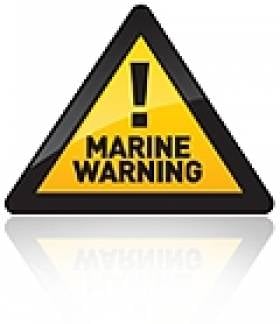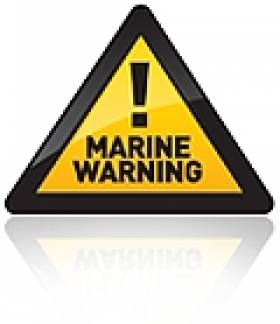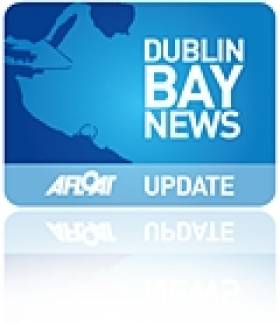Displaying items by tag: pipeline
#MarineNotice - The latest Marine Notice from the Department of Transport, Tourism and Sport (DTTAS) advises of a previously uncharted rock outside the approaches to Dingle's Fishery Harbour Centre.
The rocky outcrop or shoal was identified by the Geological Survey of Ireland (GSI) vessel RV Geo recently, and appears to be part of the shoreward extension of the Crow and Colleen-oge Rocks.
Full details of its depth and position are included in Marine Notice No 37 of 2013, a PDF of which is available to read or download HERE.
In other news, the Marine Institute is conducting a pipeline and platform superstructure (or 'jacket') survey in the Celtic Sea.
The survey, on behalf of Kinsale Energy Limited, was scheduled to commence last Monday 22 July and will continue till Friday 30 August.
Works are being conducted by the MV Granuaile (Call sign EIPT) which is carrying out underwater operations using a remote operated vehicle (ROV) making 0.4 to 0.7 knots over the ground. The vessel is listening on VHF Channel 16 throughout the project.
All vessels, particularly those engaged in fishing, are requested to give the MC Granuaile a wide berth and keep a sharp lookout in the relevant areas. Full details of co-ordinates are included in Marine Notice No 36 of 2013.
Marine Notice: Offshore Trenching Works At Corrib Gas Field
#MarineNotice - Marine Notice No 9 of 2013 advise of preparatory works for the installation of an offshore umbilical at the Corrib Gas Field development off Co Mayo.
Works are set to commence in early March along the route of the existing Corrib offshore gas pipeline with a route survey and pre-cut trenching by the Normand Ranger (Call sign LAMT).
A trench will be constructed from the subsea facilities and well in the Corrib Gas Field to approximately 16km offshore using a subsea plough pulled by the trenching support vessel.
This plough could trail as far as 1,700m behind the support vessel, and so all vessels in the vicinity are requested to keep a wide berth clear of the works. All vessel involved in the operations will be listening on VHF Channel 16 throughout the project.
Full details including relevant co-ordinates are included in the Marine Notice, a PDF of which is available to read or download HERE.
Marine Notice on Pipeline Survey in Celtic Sea
#NEWS UPDATE - The latest Marine Notice from the Department of Transport, Tourism and Sport (DTTAS) advises on a pipeline survey in the Celtic Sea next month.
PSE Kinsale Energy Limited will be commencing the survey of the 24" Gas Export Pipeline on 6 March 2012 using the Marine Institute vessel RV Celtic Voyager (call sign EIQN). The survey is expected to last 1 to 2 days, depending on weather conditions.
The survey will take place along the existing pipeline route in the Celtic Sea, between the shoreline at Inch Beach in Co Cork and gas platform 'Alpha'.
The RV Celtic Voyager will display appropriate lights and signals, and will be towing side scan sonar with cables of up to 200m long. A Radio Navigation Warning will be issued via the Irish Coast Guard (schedule Bravo, four times a day) prior to the vessel's arrival at the survey area. The vessel will also keep a listening watch on VHF Channel 16.
All vessels, particularly those engaged in fishing, are requested to give the RV Celtic Voyager and her towed equipment a wide berth and keep a sharp lookout in the relevant areas.
Further details for seafarers, including relevant co-ordinates, are included in Marine Notice No 7 of 2012, a PDF of which is available to read and download HERE.
€220m for 9km Pipeline to Cut Dublin Bay Pollution
Dublin City Council is proposing a mammoth 9km sewage outfall pipe to help make Dublin Bay cleaner - at a cost of €220m.
Herald.ie reports that the 5m-wide pipe - longer than the Dublin Port Tunnel - would dump effluent from the Ringsend treatment plant far offshore, thereby avoiding pollution in the bay and sensitive areas such as Bull Island, which recently lost its EU Blue Flag status for Dollymount Strand.
Plans for the project, which DCC head of waste Pat Cronin described as the "greenest and most economic solution" will be open to public consultation in the near future, with a timetable for completion by 2015.
The pipeline and redeveloped treatment plant will be funded via the Department of the Environment's water services investment programme.
Minister Grants Foreshore License for Corrib Pipeline
New Minister for the Environment Phil Hogan has signed off on a key foreshore licence to Shell Ireland, paving the way for the completion of the controversial Corrib gas project.
The Irish Times reports that the licence, subject to conditions, consents for the construction of the final 8km section of pipeline linking the Corrib gas field to Shell's onshore terminal at Ballinaboy. Co Mayo.
The scheme already has approval from An Bord Pleanála, and consents approved by former acting energy minister Pat Carey. But An Taisce has sought a judicial review of the planning decision, due before the High Court on Tuesday.
Still required by the developer before any work can begin are a revised emissions licence from the Environmental Protection Agency and a safety permit from the Commission for Energy Regulation under the Petroleum (Exploration and Extraction) Safety Act 2010.
The Irish Times has more on the story HERE.
- Natural Gas
- pipeline
- Corrib
- Corrib Gas field
- Corrib gas pipeline
- Shell Ireland
- Co Mayo
- Ballinaboy
- Minister for the Environment
- Phil Hogan
- Minister for Energy
- Pat Carey
- An Taisce
- An Bord Pleanála
- High Court
- judicial review
- Environmental Protection Agency
- Commission for Energy Regulation
- Petroleum (Exploration and Extraction) Safety Act 2010

































































